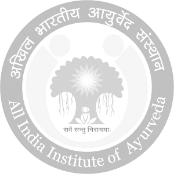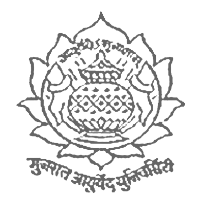Article by HP Oliver Becker
The Ayurvedic technical term rasayana is usually understood as an anti-aging measure. Behind it lies a complex, well-founded and proven therapeutic concept. In the following, some selected aspects of this Ayurvedic approach will be highlighted.
Man and immortality
The dream of eternal youth and immortality has accompanied man since time immemorial. In all cultures legends of rejuvenating elixirs, magical recipes or mysterious fountains of youth can be found. Since time immemorial, man has used his special ability of intelligence to defeat the horror of death - so far without success. In the Vedic tradition, death does not represent a terrifying figure, rather it is worshipped as a deity. The name of the god of death is Yama. In the famous Katha-upanishad, Yama teaches his disciple Naciketas the spiritual secret of life, which leads to final freedom (moksha) from life, death and all associated suffering.
Aging and death in Ayurveda
Ayurveda also aims to enable man to attain this ultimate spiritual goal. At the same time, Ayurveda is a pragmatic life science with a practical and result-oriented focus on the everyday life of man. Therefore, Ayurveda places its primary focus first on the qualitative and quantitative improvement of man's life in the here and now.
In rasayana, one of the eight branches of classical Ayurvedic medicine, the Ayurvedic source texts describe ways to slow down the aging process and ensure youthfulness in old age. At the same time, they emphasize that immortality is not possible. This is because aging and death are the natural characteristics of all living things, inseparable from life and therefore inevitable. However, since aging and death are associated with states of suffering, Ayurveda calls them so-called natural diseases (svabhava-bala-pravrtta-roga). But Ayurveda does not accept them at all if they occur prematurely. Despite this rational view, classical Ayurvedic texts contain almost unbelievable descriptions of the results of various rasayana formulations and therapies.
Prerequisites for rasayana therapy
The Caraka-samhita (one of the most important Ayurvedic source texts) dedicates the entire introductory chapter (Rasayana-adhyayah) of its therapy section (Cikitsasthana) to the subject of rasayana, thus emphasizing its importance. There, the extensive elaboration of this therapeutic approach, the discussion of preconditions as well as the description of both material/physical and non-material/psychological rasayana aspects takes place.
Ayurveda understands man as a psychosomatic being. Therefore, psyche and soma must be given due consideration in any form of therapy. Good thoughts, a positive attitude of mind as well as an ethical-moral life orientation (so-called acara-rasayana) do not only have a health-promoting effect in themselves. They also form the indispensable breeding ground in which physical rasayana procedures (e.g. medicinal plants) can develop their true power (Caraka, Ci. 1.36ff.). For an immoral person, the effect of taking rasayanas such as Cyavanaprasha-avaleha will thus be limited. This remarkable view of the Ayurvedic sages is based on a firm faith in the universal fundamental law of cause and effect.
Further, the Ayurvedic source texts describe important physical conditions for the action of rasayanas. These are particularly vividly illustrated in the Sushruta-samhita (another important Ayurvedic text) by means of an allegory. The human body is compared to a cloth to be dyed: "In a person who has not undergone bodily purification, the application of rasayana therapy will be as unsuccessful as a dye is to a dirty cloth" (Sushruta, Ci., 27.4). Inner purification procedures (pancakarma) thus form important preparatory measures for the optimization of the body environment for the following rasayana procedures.
Thus, the effect of a rasayana procedure can always be measured by the quality of the inner environment (mental and physical). A virtuoso musician can only fully develop his brilliance on an intact and high-quality instrument. Nevertheless, rasayanas are also used as a supportive measure in cases of illness.
Mechanisms of rasayana action
A means by which the excellence of rasa, etc. can be achieved is defined in the Caraka-samhita (Ci., 1.8) as rasayana. Central to this definition is the concept of dhatuparinama (transformation of dhatus). This is the complex process of transformation of nutrients of food into body structure. Only its normality ensures that our seven dhatus (including upadhatus) can regenerate continuously. In the aging process, dhatuparinama becomes increasingly weakened, even with reasonable individual diet. Responsible for this is the continuously increasing vata-dosha in the last third of life. This leads to degenerative processes in the body, which can vary from person to person. Early started rasayana measures are able to slow down these negative changes.
The following factors are necessary to achieve the excellence of dhatu-parinama and thus of all essential structural body components: healthy food consumed according to the rules, the normal function of agni (thermal transformation principle) at all levels and the openness of the srotas (transport spaces). The normality of the latter two factors depends on the homeostasis of the internal milieu, which is controlled by the functional principles of the tridoshas.
Thus a rasayana should produce the following effects in the body:
- Balance of the doshas
- control of agni, especially the dhatvagnis
- normal function of the srotas
- specific nourishment of the dhatus
The Sanskrit term rasayana contains all these criteria in coded form. It arises from the combination of the two terms rasa and ayanarasa denotes the first dhatu from which all other dhatus and ultimately the vital essence ojas arise. At the same time rasa also stands for the nutrient pool of the body. This is the result of the primary splitting of food by jatharagni (central principle of digestion) and the subsequent separation of the food essence (sara) from the waste matter (mala) by samana-vata in the small intestine. The term ayana denotes gait, path or walk.
In this respect, the term rasayana can be interpreted as a rasa vehicle, as a means that sets rasa (as micronutrients) in motion, on its way, and has the ability not only to make them bioavailable everywhere in the body at the cellular level, but also to optimize the process of their utilization in the best possible way.
Every measure that can particularly guarantee the excellent quality of this process thus fulfils the rasayana criterion, be it a food, a thought, a medicinal plant or a complex therapeutic procedure. In this again the Ayurvedic understanding of man as a psychosomatic being is evident.
rasayana and dravyaguna
In the Ayurvedic substance theory dravyaguna-vijnana the term rasayana is given as a special seal of approval, a specific pharmacological effect (karma) or special expertise of only a few substances to achieve the above mentioned goals in the body.
Well-known examples of rasayana substances include amalaki, ashvagandha and shatavari, the foods cow's milk and cow's ghee, as well as more exotic dravyas such as svarna-bhasma (gold ash), shilajatu (natural bitumen) or cow urine.
Essential components of rasayana therapy
All health-preserving measures (svasthavrtta) are essential components of rasayana-therapy. They enable man to adapt to the laws of nature and minimize stress factors at all levels.
Important components of rasayana-therapy are:
- daily routines including healthy activities
- healthy diet
- a way of life adapted to the qualities of the seasons
- internal cleansing of the body
- medication
- acara-rasayanas: ethical-moral way of life
Summary
rasayana measures are therapies that improve the quality of dhatu-parinama on the physical level. This includes the balance of all functional and structural components (doshas, agnis, dhatus, upadhatus, srotas, malas). However, rasayanas also start at the mental level, because body and mind are in continuous interaction. Thus they achieve the following effects in the human being as a psychosomatic being:
- long life
- prevention of premature aging and preservation of youthfulness
- health preservation and promotion
- Increase of the resistance against diseases
- Improvement of mental functions
- Achieving an attractive personality












